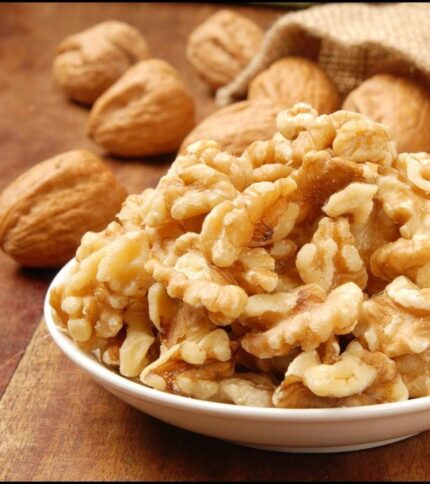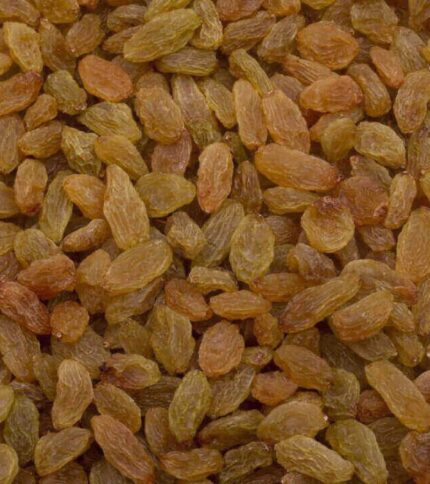Almonds are a popular nut known for their rich flavor and numerous health benefits. They can be consumed raw, roasted, or in various forms like almond butter and almond milk. Here’s a detailed overview of almonds:
Characteristics:
- Appearance: Almonds are oval-shaped nuts with a smooth, brownish skin. They can be found in their shell or shelled, and they are typically light brown to beige in color.
- Flavor: Mildly sweet and nutty with a slightly buttery texture.
- Texture: Firm and crunchy when raw or roasted; smooth and creamy when ground or blended.
Nutritional Benefits:
- Vitamins and Minerals: Rich in vitamin E, magnesium, and calcium. Also contains B vitamins, particularly riboflavin and niacin.
- Healthy Fats: High in monounsaturated fats, which support heart health and can help reduce bad cholesterol levels.
- Antioxidants: Contains antioxidants like vitamin E and polyphenols, which help combat oxidative stress and inflammation.
- Fiber: Good source of dietary fiber, which supports digestive health and helps maintain a healthy weight.
Culinary Uses:
- Raw or Roasted: Eaten as a snack or added to salads and trail mixes.
- Almond Butter: Spread on toast, used in smoothies, or as a dip for fruits and vegetables.
- Almond Milk: A dairy-free milk alternative made from ground almonds and water, used in beverages and recipes.
- Almond Flour: Made from ground almonds and used in baking and cooking, especially in gluten-free recipes.
- Almond Oil: Used in cooking and as a base for skincare products.
Health Benefits:
- Heart Health: The healthy fats in almonds support heart health by reducing cholesterol levels and improving cardiovascular function.
- Weight Management: High in fiber and protein, which can help with satiety and weight management.
- Blood Sugar Control: May help stabilize blood sugar levels due to its low glycemic index and fiber content.
- Bone Health: Provides calcium and magnesium, which are important for maintaining strong bones.
Types of Almonds:
- Sweet Almonds: The most common type, used for eating raw or roasted and in culinary applications.
- Bitter Almonds: Used in flavoring extracts and cooking, but not typically eaten raw due to their bitter taste and potential toxicity if consumed in large quantities.
Processing and Forms:
- Whole Almonds: Eaten raw, roasted, or used in recipes.
- Sliced Almonds: Thinly sliced almonds used as a topping for salads, cereals, and baked goods.
- Chopped Almonds: Coarsely chopped for use in recipes or as a topping.
- Blanched Almonds: Almonds with the skins removed, often used in baking and cooking.
- Almond Meal/Flour: Ground almonds used in baking and cooking, particularly in gluten-free recipes.
- Almond Butter: Creamy or crunchy spread made from ground almonds.
Storage:
- Raw Almonds: Store in an airtight container in a cool, dry place. They can also be refrigerated or frozen to extend their shelf life.
- Almond Flour: Store in an airtight container in a cool, dry place. Refrigeration or freezing can prolong freshness.
- Almond Butter: Store in the refrigerator to maintain freshness and prevent oil separation.
Popular Recipes:
- Almond-Crusted Chicken: Chicken coated in crushed almonds and baked for a crunchy texture.
- Almond Biscotti: Italian cookies with almonds, perfect for pairing with coffee or tea.
- Almond Milk Smoothie: Blended with fruits and other ingredients for a nutritious drink.
- Almond Flour Pancakes: Gluten-free pancakes made with almond flour for a nutty flavor and texture.
Tips:
- Roasting Almonds: Roasting enhances the flavor. Spread almonds on a baking sheet and roast in the oven at 350°F (175°C) for about 10-15 minutes, stirring occasionally.
- Making Almond Butter: Blend roasted almonds in a food processor until smooth, adding a bit of oil if necessary for creaminess.










Reviews
There are no reviews yet.